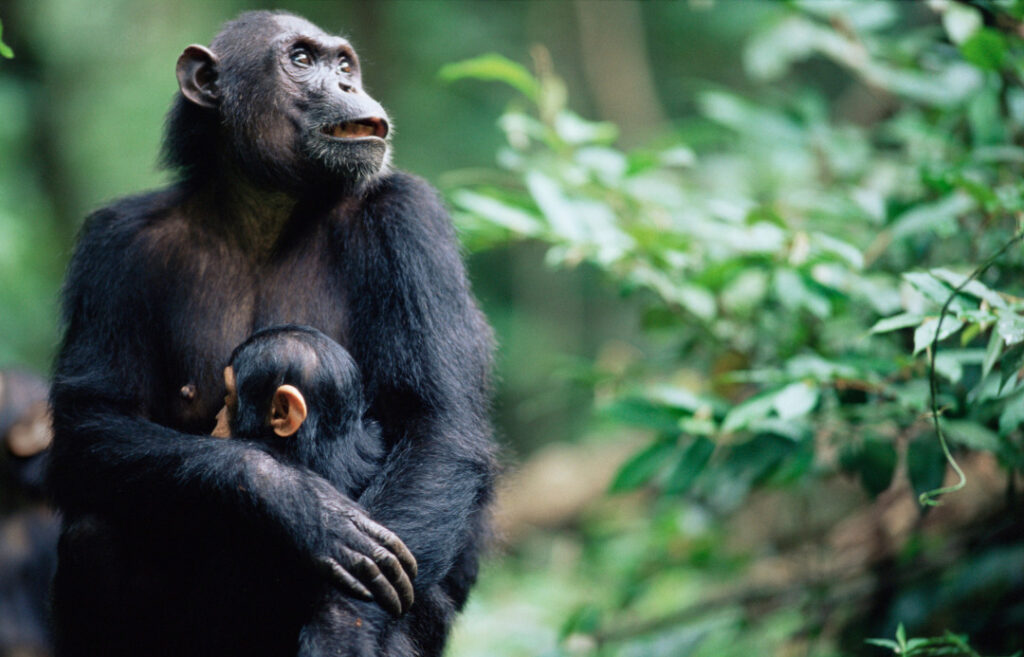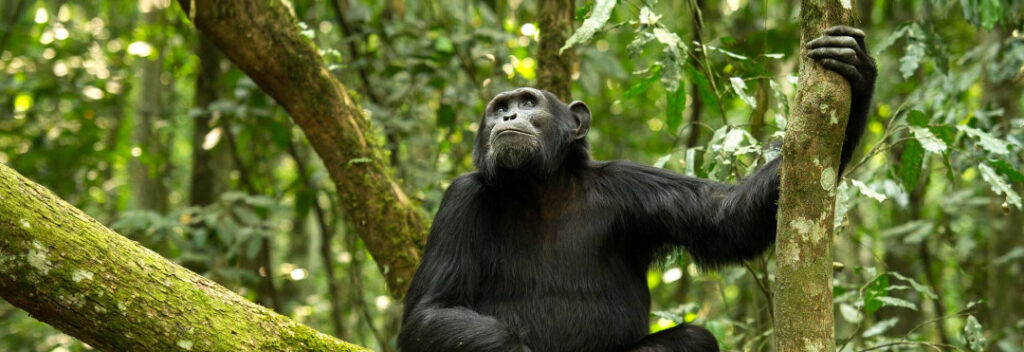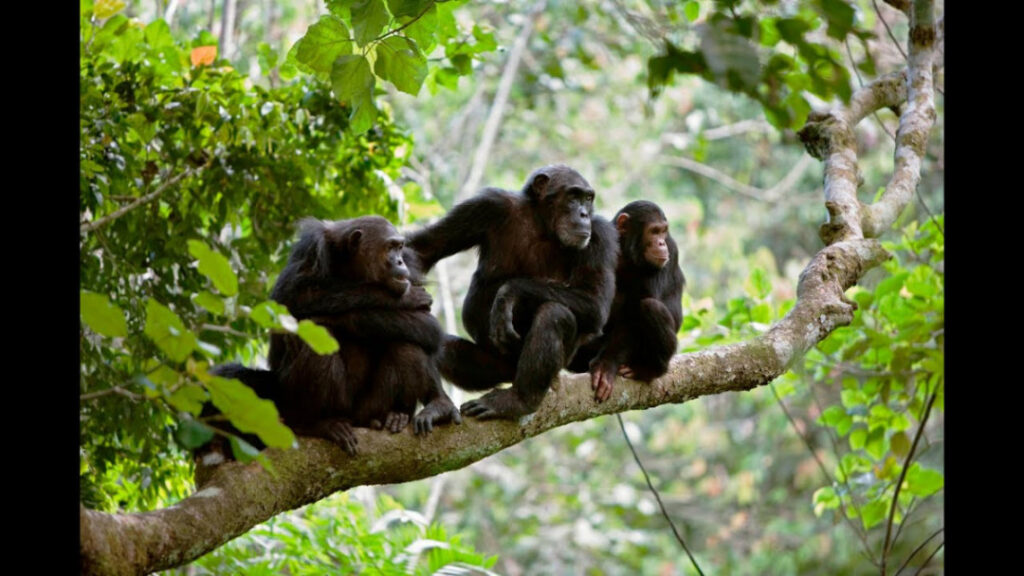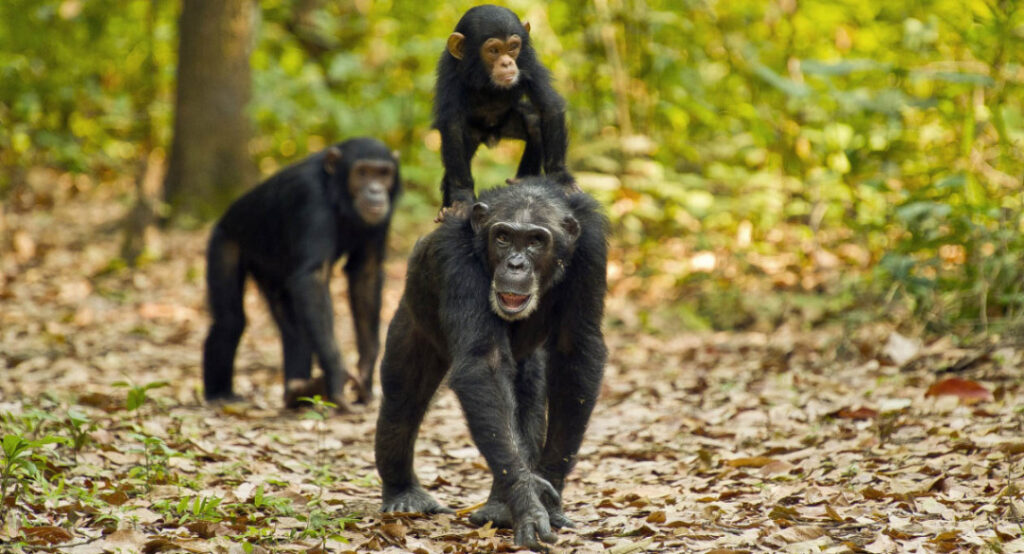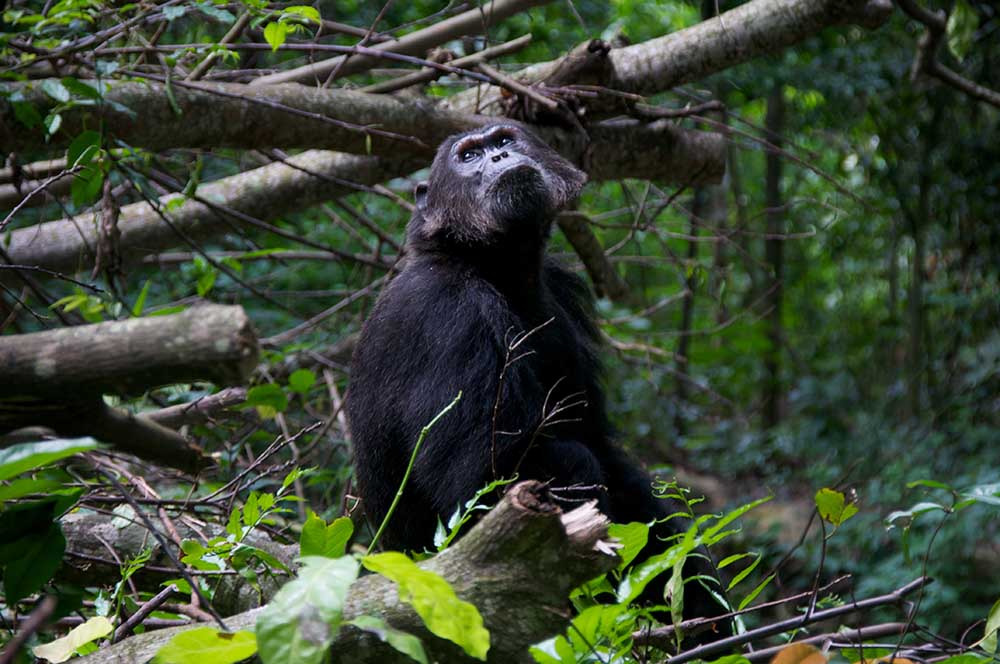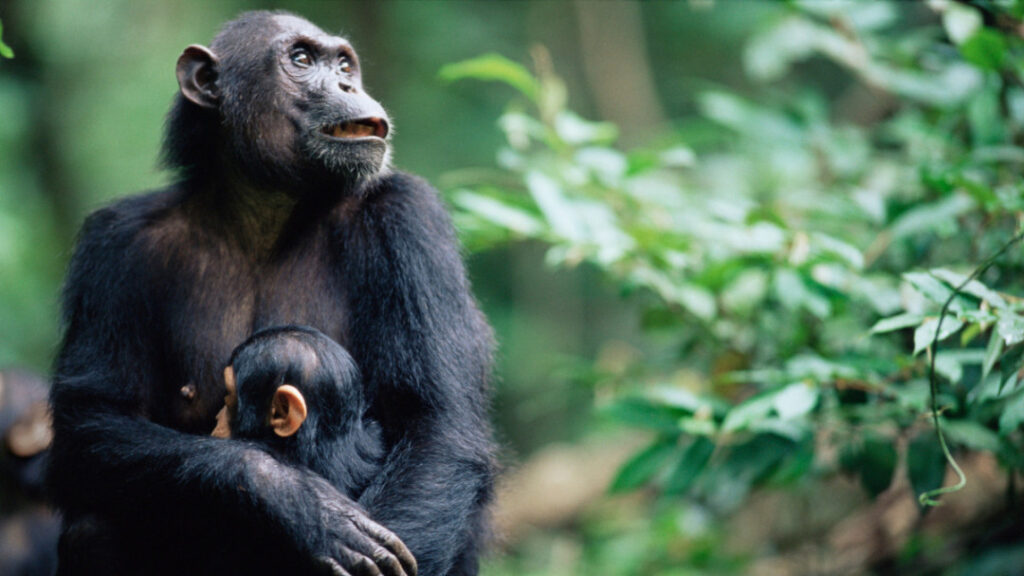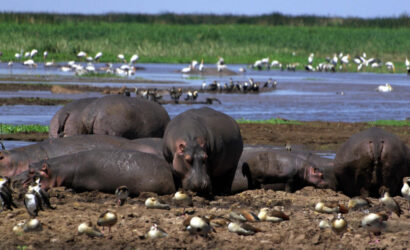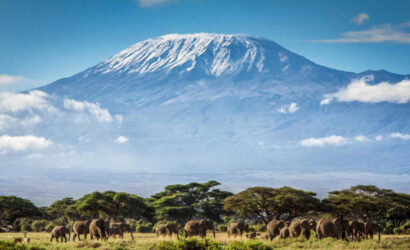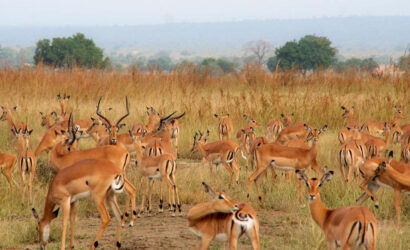Situated on the wild shores of Lake Tanganyika, Gombe Stream is an untamed place of lush forests and clear lake views.Gombe is the smallest of all the Tanzania’s national parks: a fragile strip of chimpanzee habitat straddling the steep slopes and river valleys that hem in
the sandy northern shore of Lake Tanganyika. Its chimpanzees – habituated to human-visitors – were made famous by the pioneering work of Jane Goodall, whom in 1960 founded a behavioral research program that now stands as the longest-running study of its kind in the world .Gombe National Park is a photographer’s delight for its birds and butterflies, its magnificent scenery and its quintessentially unspoiled beaches. You can spend many hours simply absorbing its tranquil ambience from a beach hammock or a traditional dhow on the cobalt clears inland sea. You can fish with a rod, snorkel amongst scintillating shoals of cichlids: larger versions of the living neon jewels familiar from childhood aquaria. You can walk to awe-inspiring falls of lacy spume cascading hundreds of feet through rainforest from Rift Valley escarpments.Chimpanzee communities co-operate in hunting, keeping watch, recognizing danger or food and communicating their feelings to others. They can also transmit more personal information to significant individuals by means of barks, whimpers, howls, screeches and a repertoire of 15 distinct sounds, from warnings of specific threats, such as snakes, toqueries, challenges and expressions of enjoyment and frustrations. After a two-hour trek or more to find the chimps, choruses of breathy hoots from the forest canopy announce that you have been spotted. You may watch for no more than an hour as the community you have found performs its daily rituals of mutual grooming, aggression, fondling, deference,
feeding and boisterous play.
An excited whoop erupts from deep in the forest, boosted immediately by a dozen other voices, rising in volume and tempo and pitch to a frenzied shrieking crescendo. It is the famous ‘pant-hoot’ call: a bonding ritual that allows the participants to identify each other through their individual vocal stylisations. To the human listener, walking through the ancient forests of Gombe Stream, this spine-chilling outburst is also an indicator of imminent visual contact with man’s closest genetic relative: the chimpanzee.
Gombe is the smallest of Tanzania’s national parks: a fragile strip of chimpanzee habitat straddling the steep slopes and river valleys that hem in the sandy northern shore of Lake Tanganyika. Its chimpanzees – habituated to human visitors – were made famous by the pioneering work of Jane Goodall, who in 1960 founded a behavioural research program that now stands as the longest-running study of its kind in the world. The matriarch Fifi, the last surviving member of the original community, only three-years old when Goodall first set foot in Gombe, is still regularly seen by visitors.
Chimpanzees share about 98% of their genes with humans, and no scientific expertise is required to distinguish between the individual repertoires of pants, hoots and screams that define the celebrities, the powerbrokers, and the supporting characters. Perhaps you will see a flicker of understanding when you look into a chimp’s eyes, assessing you in return – a look of apparent recognition across the narrowest of species barriers.
The most visible of Gombe’s other mammals are also primates. A troop of beachcomber olive baboons, under study since the 1960s, is exceptionally habituated, while red-tailed and red colobus monkeys – the latter regularly hunted by chimps – stick to the forest canopy. The park’s 200-odd bird species range from the iconic fish eagle to the jewel-like Peter’s twinspots that hop tamely around the visitors’ centre.
After dusk, a dazzling night sky is complemented by the lanterns of hundreds of small wooden boats, bobbing on the lake like a sprawling city.
Getting there
Kigoma is connected to Dar and Arusha by scheduled flights, to Dar and Mwanza by a slow rail service, to Mwanza, Dar and Mbeya by rough dirt roads, and to Mpulungu in Zambia by a weekly ferry.
From Kigoma, local lake-taxis take up to three hours to reach Gombe, or motorboats can be chartered, taking less than one hour.
What to do
Chimpanzee trekking; hiking, swimming and snorkelling; visit the site of Henry Stanley’s famous “Dr Livingstone I presume” at Ujiji near Kigoma, and watch the renowned dhow builders at work
When to go
The chimps don’t roam as far in the wet season (February-June, November-mid December) so may be easier to find; better picture opportunities in the dry (July-October and late December)

